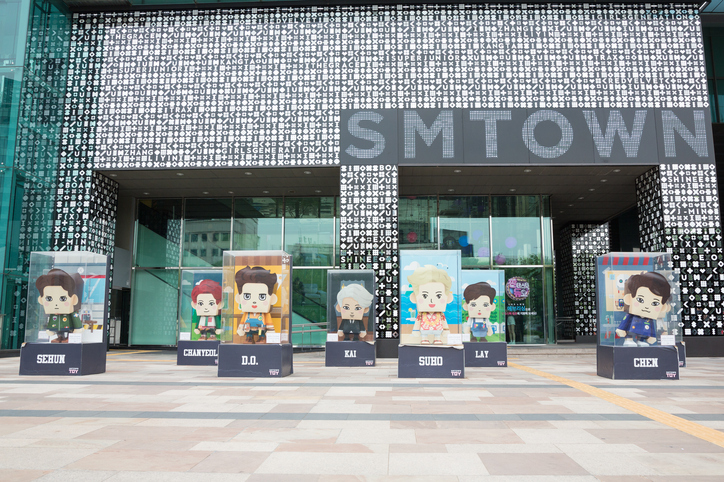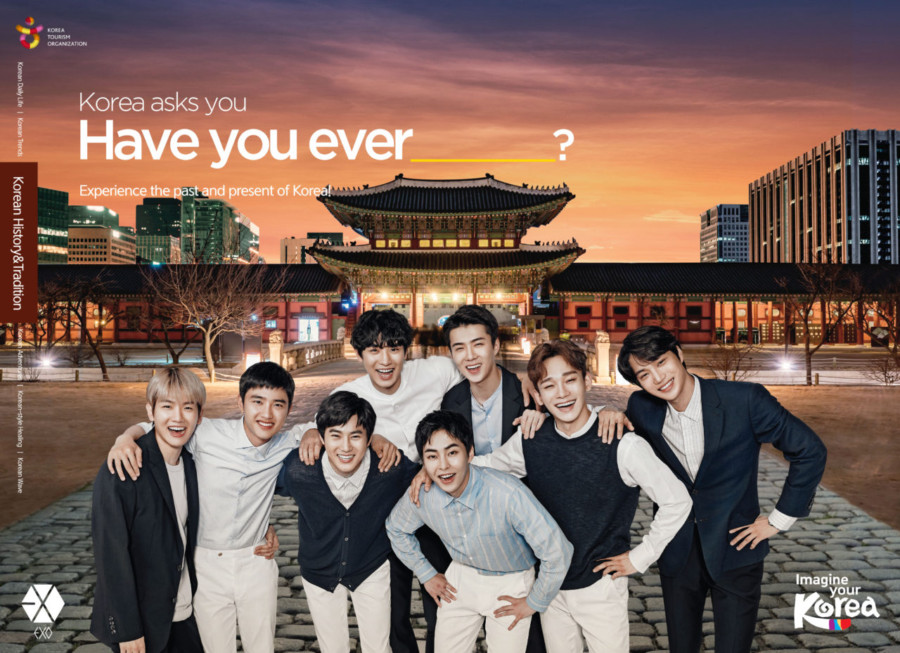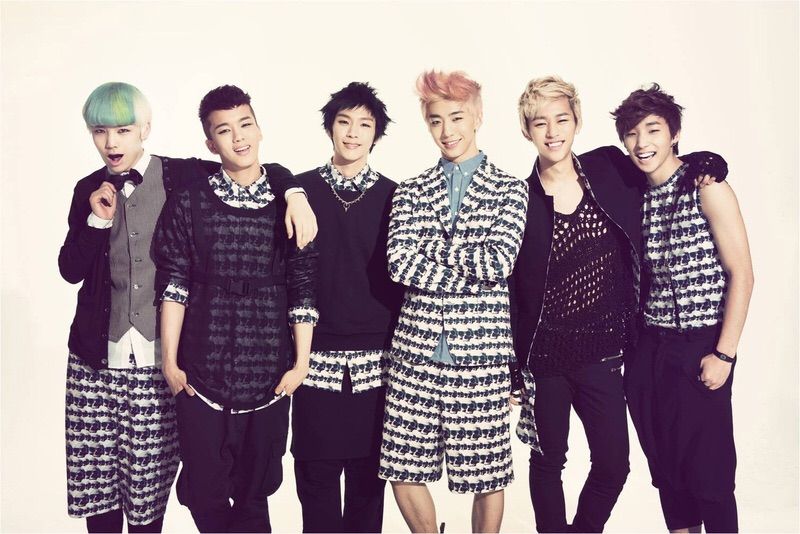Before we dive into the effect of the Korean Wave on tourism, it’s important to understand what the wave is. The Korea Tourism Organization (2012) defines the Korean Wave as “a favorite phenomenon of Korean popular culture abroad”. The term was originally coined by the Chinese press in the 1990s when Korean dramas like ‘Jealousy’ (1993) and ‘What is Love All About?’ (1997) were first shown on China State Television. They gained an extensive audience and recognition and kickstarted the Korean Wave. Later, it spread to Japan through music. Thanks to the many bands such as BoA, Girls Generation, Super Junior, Big Bang, BTS, GOT7, and BlackPink, the Korean Wave exploded across not just Asia, but the world. Today, the term Korean Wave (Hallyu in Chinese) is synonymous with Korean culture, and its increased popularity and cultural impact, and includes everything from television, movies, music, and food, to sports.

The Korean Wave spread like wildfire through different stages: In the 1990s, it swept across Japan, China, and Taiwan; in the early 2000s, Hallyu went global with dramas being broadcast in the Middle East, Australia, and the American continent; and in 2020, K-pop bands like BTS sold out stadiums and topped international music charts.
Impact On Tourism
The influence of the Korean Wave on international fans is something that cannot be ignored. But has this influence impacted the country’s outbound or inbound tourism? Some scholars argue that in 1962, South Korea was viewed as an unfavourable tourist destination. This was due to student riots and perceptions of political instability, further enhanced by overseas news media reports that showcased only the ongoing tensions between North and South Korea. However, this changed after the 1988 Seoul Olympics which allowed a larger audience to witness Korea differently. Tourism increased but the government did not fully recognise its potential until after further economic growth following co-hosting the 2002 soccer World Cup with Japan.
Since the late 1990s, Hallyu tourism has trended across the globe and attracted more and more foreign fans to visit Korea. ‘Hallyu tourism’ refers to those foreigners who visit Hallyu tourist attractions due to the influence of this Korean wave. The cultural influences brought by the Korean Wave have proven to be an essential component of South Korean tourism. The wave brought Hallyu stars, which include Korean actors, pop stars, and athletes, to a world platform, and their popularity became an effective and profitable method to attract tourists. According to Martin Roll, the Hallyu effect has been tremendous, contributing to 0.2 percent of Korea’s GDP in 2004, amounting to approximately USD 1.87 billion. In 2019, Hallyu had an estimated USD 12.3 billion boost to the Korean economy.
How Has The Korean Wave Managed To Impact The Tourism Industry?
The Government’s Involvement:
The Republic of Korea became a sought-after tourist destination both regionally and internationally since the Korean Wave or Hallyu started being used by the Korean government to increase its tourism efforts. The promotion of Hallyu stars by the government through various campaigns led to an increased desire to travel to Korea and increased attention to Korean culture. Whether it is SouthEast Asia or the world, the concept of the Korean Wave has increased the cultural exportation of the brand ‘Korea’ and increased the influx of tourists to Korea.

Hallyu’s power to attract can be seen not only in Southeast Asia but across the world as well. It has led to K-pop/K-drama-based tours that take die-hard fans to the best K-pop/K-drama locations around the country. The Korean government, through its Ministry of Culture, Sports, and Tourism (MCST) has used the Korean Wave to not just increase tourism to South Korea but also to encourage the purchase of Korean cultural products, as well as national goods like Samsung and LG electronics. All of it leads to increased GDP.
The worldwide interest started with K-pop performers such as Girls’ Generation, Super Junior, Big Bang, and Psy’s popularity. Their image transformed the social and cultural image of Korea. When once Korea was seen as politically unstable, it was now viewed as a place of wealth and opportunity due to the high fashion of these stars, their music, and their message. This interest in Korean culture also led to an avid interest in the Korean language, electronic items, fashion, beauty products, and cuisine. While Western culture has a certain amount of hegemony over the planet, it seemed South Korea wasn’t far behind.
Kpop Or Kdrama Locations

Various universities in South Korea were assigned to produce the next generation of directors, producers, and actors. Film studios were actively promoted by the government and additionally, budgets were allocated to creating agencies (Hallyu agencies under the umbrella of South Korea’s Ministry of Culture, Sports and Tourism) that primarily focused on promoting tourism based on Korean culture and K-Drama locations such as movie sets and television sets as tourist destinations. Today while the government owns many of the media outlets, there are numerous private organisations, and the philosophy is no longer domestic-orientated but rather internationally focused and promoted. These departments focus on promoting the Korean Wave through avenues such as food, sports, or celebrity events. The government has also promoted and encouraged the Korean Broadcasting Commission (KBC) to visit international film festivals.
In 2019, Maria Teresa Ogando Barros in ‘The Hallyu Wave and Tourism in South Korea’ notes that South Korea accounted for a total of 17,502,623 international visitors due to the Hallyu Wave, a 14 percent increase as compared to 2018, and a tourism expenditure of US$28,855,400,000 was made during this year – an impact of Hallyu Wave. East Asia and the Pacific countries still make up for 83.1 percent of tourists visiting South Korea, with 34.4 percent of those being Chinese visitors (Korea Tourism Organisation).
Fashion Tourism And Medical Tourism
Due to the Korean Wave, Seoul, the capital city of South Korea, became a global icon of fashion, beauty and culture. Fashion that was closely related to Hallyu idols, served as a promotional image of South Korea. So much so that many Hallyu fans began visiting Korea to look like their favourite pop stars or Hallyu stars. And because of that aspiration, medical tourism, particularly cosmetic surgery and the cosmetics industry were also directly affected by the Korean Wave. Dobo Shim in his paper ‘Waxing the Korean Wave’, 2011 notes that Hallyu fans visit Korea to get plastic surgery to look like their idols.
A Hybrid Of Different Cultures
The Korean Wave includes Korean music and drama. Korean music or the K-pop industry created a hybrid genre where they would mix American music styles and choreography with Hangul. An idol’s image was tailored to Western standards. The Korean Wave was therefore a mix of Asian and Western tastes. According to Howard K’s ‘Exploding Ballads: Due to the Transformation of Korean Pop Music’, “…more and more musicians appropriated foreign music styles”.

The success of Kdrama culture is believed to be due to its apolitical nature and its adaptability to a majority of cultures. South Korean dramas have something for everyone. The dramas evolve with the audience, showing shifts in generational mindsets, and appealing more and more to an audience beyond South East Asia. Even ‘Forbes’ notes that JTBC’s ‘Itaewon Class’ (2020), might not be the first drama to feature a transgender character in a positive light, but it might be the first one to celebrate a character’s transition.
This adaptation has led to Kdrama’s increased popularity. According to Ulara Nakagawa’s article “Korea’s Hallyu Boom?”, a plethora of ‘fan clubs’ have sprung up around the world, not only to support their K-pop groups but also to work towards various causes. One of the more recent examples is how in June 2020 the BTS ‘Army’ raised over $1 million for the Black Lives Matter movement in just 25 hours.
Globalisation And New Technologies Helped

Of course, South Korea has used globalisation and digitalisation to promote its cultural media. The Korea Creative Content Agency USA highlights that while globalisation was initially created through traditional media, it was new media that brought different means of mass communication using digital technology that globalised the Korean Wave. Having played this significant role in the continued growth of Hallyu, the internet and social networking services (SNS) further led to significant growth in tourism.
Government agencies such as the Ministry of Culture, Sports and Tourism (MCST) and the Korean National Tourism Organisation (KNTO) have regularly published news articles about Hallyu on their digital media websites and even produced in-depth reports on the popularity of Kdramas and Kpop. The ease of access of Kdrama or Kpop through various platforms enhanced the spread of Korean culture. What began with the airing of a television drama in China in the early 1990s, transformed into a global phenomenon within just two decades.
Cancelling Out The Language Barrier
The digitalisation of the Korean Wave enabled access to Korean drama with subtitles, cutting language barriers. It encouraged people to take an interest in Korean culture and language, leading to the opening of Korean cultural centres in other countries. Korea Economic Institute Of America notes that the only language to experience significant growth in the United States over the last few years was Korean. The number of students studying Korean increased by 44.7 percent even as overall language enrollment decreased by 6.7 percent.
Tourism Promotions
Prominent actors, actresses, and K-pop stars are used by government agencies to promote Korea as a tourist destination and have allowed Korean businesses to break into regional markets. According to the Korean Culture and Content Agency’s ‘The Korean Wave. Entertaining more than half the world, the Korean Wave has improved Korean business access and profits both regionally and internationally. Tourism campaigns regularly feature K-pop idols. For example in 2018, eight members of EXO were made honorary ambassadors of Korean tourism. They were not just extremely popular, they also became a practical way to connect K-pop and tourism.

After Korean singer Psy’s ‘Gangnam Style’ became YouTube’s most-viewed video of all time in 2012, tourism officials posted a guide to the real Gangnam (one of Seoul’s most affluent areas). BTS under Big Hit Entertainment, has been strongly positioned as the main player for Hallyu. In 2018, Seoul launched seven advertisements with BTS, to amp up the appeal and tourist-friendly nature of Seoul.
Also Read: 9 K-pop/K-drama Locations You Must Visit If You’re A True Fan
Success And Failure?
While we can all agree that the Korean Wave has led to South Korea becoming the world’s leading exporter of popular culture, the wave’s influence has also drawn attention to the weaknesses within Korean society or the entertainment industry as a whole.
Wage Gap Due To Gender
Like many androcentric societies, even in South Korean society, gender inequality has been perpetuated and deepened by historical practices and traditions. In Korean society, hierarchical and patriarchal values go hand in hand, thus reinforcing gender norms. Even the K-pop idol industry contains elements that reinforce a sexist culture, all of which continue to be a big obstacle for women to pursue an equal opportunities in any industry. Many girl groups in K-pop or female stars are criticised more harshly than their male counterparts for the same behaviour.
It is no surprise that Korea has the biggest gender wage gap among OECD nations. According to a report by ‘Koreaboo’, Korea’s National Tax Service released shocking findings on the difference in income between male and female actors and singers: “In the entertainment industry, men made 9 million won ($ 7,605) more on average than their women counterparts. However, this disparity was not observed within the top 1 percent. As far as the music industry is concerned, male stars made an average of 53 million ($44,789) more than female stars. This disparity was true within the top 1 percent where male singers earned more than double their female counterparts.
Unnatural Standards Of Beauty

Korea’s unnatural standards of beauty can easily be seen in the kind of K-pop or Hallyu stars produced by the industry. While both male and female stars are subjected to the pressure of looking ‘young and physically attractive’, the female stars have specifically stricter standards and more limitations. They are expected to live up to all but impossible standards. There are many who say that Korea is a society obsessed with appearance when cosmetic-surgery clinics are ‘as many as convenient stores’. Hallyu culture cuts into the fabric of beauty perception and its influence on beauty standards.
LGBTQ Representation
Another threat that concerns both the entertainment industry and South Korea as a tourism destination is the lack of LGBTQ+ rights and their representation in the industry. The Kdrama and Kpop industry hasn’t been very open about LGTQ+ rights because they are still not accepted in mainstream society in the country. In Korea, where same-sex marriage is still illegal, and most still hold onto conservative mindsets, those who struggle to find their sexual identity also feel the need to repress it. It could also appear as a drawback for attracting LGBTQ+ tourists.
Lawsuits Against The Entertainment Companies

The K-pop industry has an extremely demanding nature. The recruitment practices, rigorous training system, and the continual pressure to be ‘perfect’—have led to many artists filing lawsuits against their own companies. At different training academies, many well-known entertainment agencies usually first recruit dozens of students, bind them in contracts that last up to 15 years or more, and train them so that they can become ‘global stars’. Decisions about their costumes, choreography, lines, and monthly evaluations are usually not up to the idols to make. The demanding nature of the industry has led to many issues with how trainees, idols, and actors are treated by their companies.
One of the biggest examples of these lawsuits is when the group B.A.P, which debuted in 2012, filed a lawsuit two years later against their company TS Entertainment. They reported many unfair terms in their contract. This lawsuit led to the South Korean government revising several contracts. The case became a massive reference in the industry. The lawsuits following this highlighted how the trainees or popstars were treated by the entertainment industry, and have in one way or another created a grim image of South Korea as a tourism destination.
Abuse And Mental Health
According to OECD Data, South Korea has the second-highest suicide rate among OECD countries. Indisputably, lack of attention to mental health is a growing problem in the country and the Hallyu industry. It’s unfortunately apparent in the spate of suicides involving K-pop stars in recent times. It is not uncommon for artists to go on a hiatus due to anxiety or depression, or even die by suicide. In 2017, Kim Jong-hyun, 27, a member of SHINee, died by suicide. In 2019, Jeon Mi Seon (actress), Sulli (actress and former member of f(x)), Goo Hara (actress and former member of KARA), and Cha In Ha (actor and member of Surprise U) also died by suicide.
Mental health issues are still taboo in South Korean society, therefore people either hide their issues or prefer not to get treated. Further, the mental health problems caused by various reasons, be it online abuse or unnecessary high standards of beauty, have created a negative image of the South Korean entertainment industry, and also led to a high percentage of people seeing South Korea as an undesirable country to visit.
Sex Scandals

Reports of sexual and other forms of abuse have plagued the South Korean entertainment industry for years. In March 2019, several male Kpop stars, including Seungri, a member of the boy group Big Bang, Choi Jong-hoon, a former member of FT Island, and singer-songwriter Jung Joon-young were implicated in a spycam sexual abuse scandal, also called the Burning Sun scandal. The successive accusations in the case not only highlighted sexual assault but also involved sex trafficking, secret and non-consensual filming, and video distribution of sexual acts, drug trade, rape, police corruption, and tax evasion in the industry. The case resulted in a huge investigation and re-opening of sex crime cases related to the entertainment industry.
Also, the suicide of soap star Jang Ja-Yeon highlighted South Korea’s deep-rooted misogyny. These scandals, once again, lent to South Korea’s image of being an unsafe country for female residents and travellers.
BTS And Tourism
The best example that showcases the worldwide spread and rising relevance of South Korean media is the K-pop group Bangtan Sonyeondan or BTS. Their success appears to have improved Kpop’s image, raised the global recognition of Korean artists, and furthered interest in Korean culture. According to ‘Business Insider’, BTS increased South Korea’s popularity, contributing to a surge in tourism. Seemingly breaking all kinds of cultural barriers, their 2020 album Map of the Soul: 7 continues to dominate the world.

Just last year, BTS’ World Tour ‘LOVE YOURSELF: SPEAK YOURSELF’ concluded in Seoul in October at the Seoul Olympic Stadium. According to a research study conducted by the Korean University professor Pyun Ju Hyun, the event drew around 187,000 tourists, of whom approximately 23,000 attended the concerts, and an average of 3 in 10 visitors went to Seoul. Soompi reports that this resulted in an increase in the average number of visitors in South Korea in 2019—approximately 87,000 more people than average.
In fact, according to a study by South Korea’s Ministry of Culture, Sports and Tourism and a government tourism institute BTS’s US-chart-topping single ‘Dynamite’ of 2020 was predicted to generate more than $1.4 billion for the South Korean economy and thousands of new jobs in the country. The study excluded foreign tourism due to the tight travel restrictions imposed by Seoul over the coronavirus pandemic. However, the ministry added, “If we include the projected tourism revenue down the road… we expect the economic impact to be stronger.”
How Can Hallyu And Tourism Work Together?
The Hallyu industry is a solid export product for the country and owns a stable foundation to develop a high-quality tourism industry. Strong government support and recognition of Hallyu could be a key element that can prove its power and relevance, and the likelihood of Hallyu tourism can be further developed annually. However, South Korean society and the Korean government have to work together, on the weaknesses mentioned above, especially the ingrained misogyny and gender inequality. These drawbacks paint a negative picture of the country and prevent female tourists from visiting. Also, legal actions must be introduced into the entertainment industry, to deter the recurrent issues arising from artists’ mistreatment, which not only goes against basic human rights but also feeds the controversial image of the entertainment industry.
The idea that Hallyu creates and affects South Korea’s image as a destination might be bound to subjective interpretation and personal preferences, but it is clear that Hallyu tourism is strongly related to globalisation. Therefore, the country should benefit from the fact that newer generations seem to be more open-minded and accepting of different cultures. Moreover, these newer generations seem to be more interested in themed travels and cultural experiences which are likely to increase the influx of tourists interested in film or music.